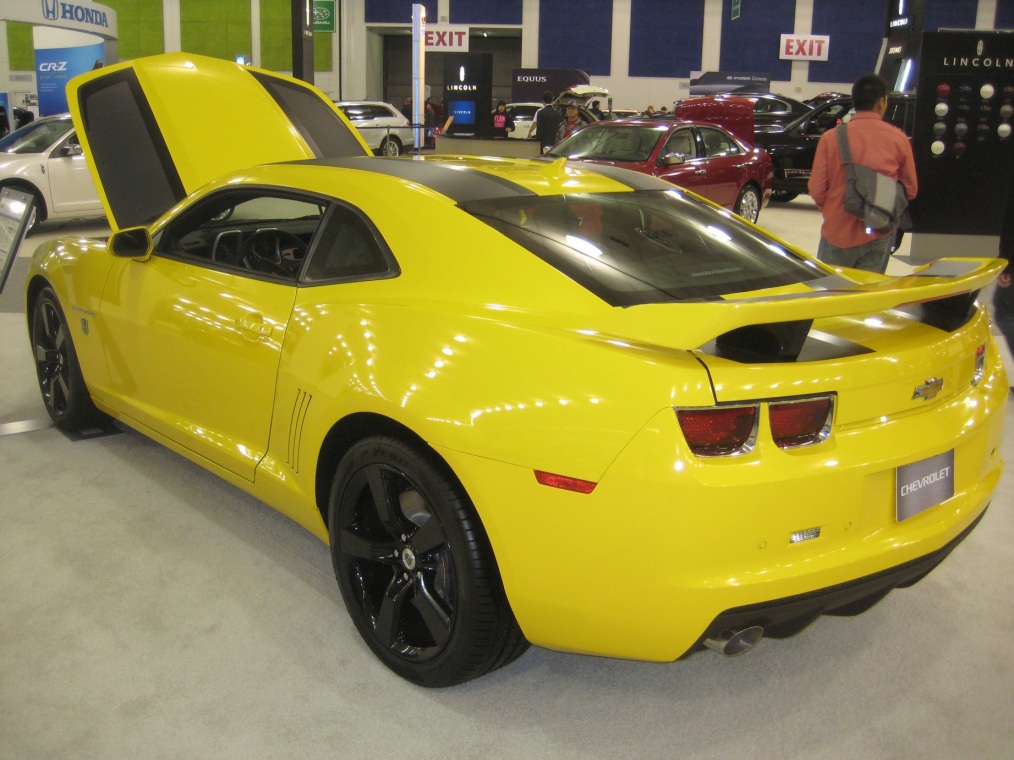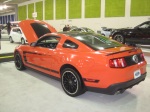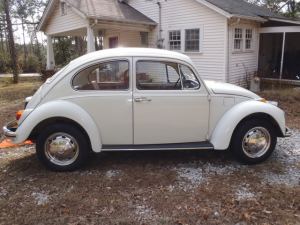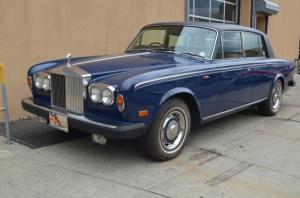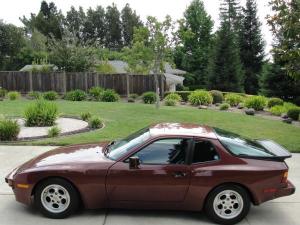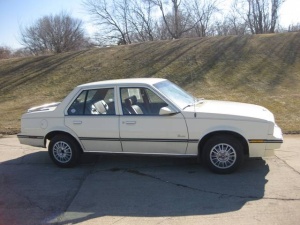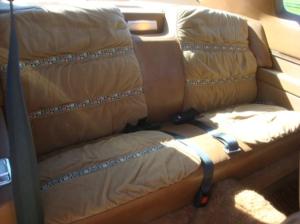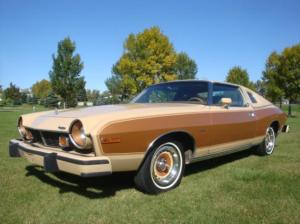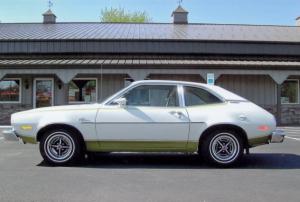by Thomas Zizzo
I’ve seen the lists, but I wanted to chime in with my own list of popular movie cars. To say I’m a movie buff would be an understatement, so my list of Hollywood cars is wide, but specifically chosen. While some movies had some interesting vehicles play critical roles, there have been a few that have become so synonymous with their Hollywood portrayal, it’s hard to picture them as being just another car. Let me put that another way. When you see one of these cars on the road, you can’t help but think of the movie that made them famous. I’ve narrowed them down to these ten, in no particular order.
The Italian Job -1969 Austin Mini Cooper S
The British micro car exploded in popularity after the Italian Job was first released in the late 60’s, not just because it was a cool little car, but it literally played a pivotal role in the film, you might say it was the biggest star in the movie, and that’s saying a lot considering the movie had quite a few human stars in it. The plot of the film involved a huge gold heist, which would not have been possible without the help of the quick, agile little cars; little, being the important factor here. The car chase scene, arguably one of cinema history’s best, has the Minis driving over roof tops, down stairs, in and out of buildings, it was as if there was no where the little car couldn’t go. In its own right, the classic Mini Cooper is an awesome car, but just as ET made Reese’s Pieces popular-an already tasty candy-The Italian Job made the Mini one of the sweetest little rides you could ever dream of owning.

Christine -1958 Plymouth Fury
As far as I’m concerned, no movie car list would be complete without a 1958 Plymouth Fury, because it IS the title character of the movie. Although most may not admit it, I think just about everyone at some point develops a special relationship with their car. In Christine’s case, it was beyond scary and literally took on a life of its own. Most of the time people only think their car is possessed when it won’t start or breaks down a lot. Christine was much more than that of course, and I will admit there were times in the movie that I was rooting for the old Fury. Not many of the late 50’s Plymouth were ever produced, making them a rare sight, and technically, there were no production Furies made in red, but if and when you ever do see one, Christine is the only thing you’ll be thinking of.

Bullitt -1968 Mustang Fastback
I will admit I’m a little biased about this choice because I love vintage Mustangs, but hands down if the actual car that was used in the movie ever came up for sale, the price it would bring would be astronomical. Just finding a highland green 1968 GT Fastback with the 390 big block engine would be a great score, but considering the car’s iconic chase scene in the movie on the hilly streets of San Francisco with Steve McQueen behind the wheel-and he did in fact drive for most of those scenes, it’s value really is priceless. In the movie, the green fastback didn’t really have a huge role, but the chase scene was so good, it became a cult classic. The car is so revered that Ford even introduced special edition Bullitt Mustangs in 2001 and again in 2008. There was even a YouTube video done that retraces the chase scenes’ hills and turns in San Francisco some 40 years later. Even the iconic American Racing wheels, arguably the best vintage after market wheel ever made, have been reworked and branded, Bullitt wheels. Get your hands on one of these cools rides, and like Steve McQueen, you’ve got your fast machine.

Herbie The Love Bug -1963 VW Beetle Ragtop
Not only is the car in Herbie the title character, but the loveable bug did everything but talk in the film, that is if you don’t count the beeps as talking. Herbie was the complete opposite of Christine, and never before had a movie car been more animated as it shook, beeped (Beetles have a very distinct horn) squirted oil and nearly committed suicide off the Golden Gate bridge. It’s easy to forget that Herbie is a car, and you can’t help but love the unique look and simplicity of a classic VW Beetle. Almost any car enthusiast will tell you that at one time in their life, they’ve owned one, as if it was a rite of passage, and the VW Bug has outsold every car in automotive history, including the Ford Model T. For the role in the movie, Herbie was actually cast for the part. Disney put several cars out on the studio lot and had employees check them out and choose which one they liked best. The Bug was an instant hit. While there were more than 6 cars used in the making of the original film (no one really knows exactly how many cars they used) one of the original surviving cars is owned by the movie’s main character, Dean Jones. Seems fitting that he has the original Herbie in his driveway.

Goldfinger -1964 Aston Martin DB5
While there have been many ‘Bond’ cars over the years, much like his ladies, the one that has stood out the most was the 1964 Aston Martin DB5, which first appeared in the movie Goldfinger. Not only is the British classic sporty and slick, but the original car used in Goldfinger had all the cool goodies you would expect to see in a spy car, blade-like wheel spinners, oil slick, smoke screen and even an ejector seat. It is probably the only Bond car that appeared again in other Bond movies, even in one of the most recent, Casino Royale. If you want to feel cool cruising around in this classic however, it’ll cost you, try somewhere in the neighborhood of around $400K, that is if you can even find one for sale. The original car used in the movie recently sold at auction for more than $4 million.

Back to the Future -1981 DMC-12 DeLorean
The DMC-12 DeLorean is not only a unique and rare car (DeLorean’s untimely death meant the company wasn’t around very long for many to have been made) it really wasn’t a great car, as far as sports cars go. The version sold in the US had less than 150 horsepower, and could accelerate to 60 mph in a disappointing 10 seconds. But it had a certain look, and with the gull-wing style doors, it was perfect for the role of ‘car-turned-time-machine’ for the 80’s box office hit, Back to the Future. It is quite possible that the stainless steel bodied car would have been all but forgotten if it were not for its role in the Back to the Future movies. Funny thing though about the car in the movie-it needed to hit 88 mph to make the jump in time, but a stock DeLorean speedometer never went past 85 mph.

Vanishing Point -1970 Challenger RT
I didn’t want to leave the Mopar fans disappointed, and lately it seems that this movie-and the car used in it-have reached cult status. I’m talking about the 1971 film Vanishing Point, and its star, the white 1970 Challenger RT. Why is it cool? Because the film is just about some guy driving from Denver to San Francisco in record time, not much plot, and who needed plot in the 70’s when you were behind the wheel of a cool Challenger RT. The other reason it’s cool is because Mopar fans loved it so much that a Chrysler dealer in Pennsylvania worked with Dodge to sell a new Challenger ‘Kowalski’ edition, Kowalski being the name of the main character in the movie. Basically, if you’re a Mopar fan, you know the movie Vanishing Point, for the car of course.

Gone in 60 Seconds –1967 GT 500 Shelby ‘Eleanor’ Mustang
As much of a Mustang purist as I am, I have to admit that the real star of Gone in 60 Seconds, was the Eleanor 1967 GT500 Shelby Mustang, even though we all know it wasn’t a real Shelby, it managed to get a lot of people’s attention. Never mind Nicolas Cage and Angelina Jolie, no one honestly remembers their performance in the movie, but what they do remember was that tricked out Mustang. In the original 1974 film, which technically wasn’t the original because the stories were different, and the title of the movies were different (the 1974 movie is Gone in Sixty Seconds, not 60), it did feature an ‘Eleanor’ Mustang; a 1973 Mach 1, but was no where near the modified 1967 Mustang hot rod used in the 2000 movie. Designed by illustrator Steve Stanford and built by hot rod legend Chip Foose, Eleanor was destined to be a hit among car freaks. While I still like a good stock 1967 Mustang Fastback, I certainly would not turn away an Eleanor Mustang. The design was so cool in fact it spawned a niche industry of remakes of the movie car. You can still get one, now branded as a Shelby GT500CR, made by a company called Classic Recreations, and they aren’t cheap, but they are officially sanctioned by the legendary Shelby himself, so that obviously means they’re cool.
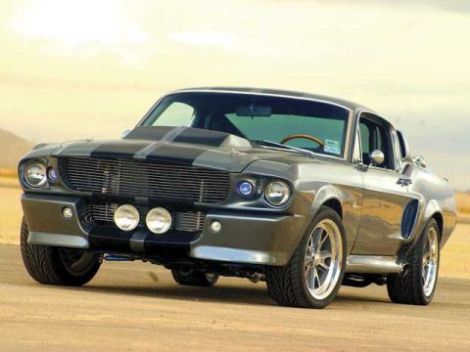
Smokey and the Bandit1-1978 Pontiac Trans Am
Smokey and the Bandit started a love affair with the Trans Am, and why not, by the late 70’s the muscle car era was over, but someone forgot to tell Pontiac, and Smokey and the Bandit was a reminder that cool, fast American muscle cars still existed. Trans Am sales soared in the next couple of years as a result of the film. Sometimes I think we forget why muscle cars were the king of cool. They were cool because they were simple, elegant, fast and CHEAP! The Bandit was as country hillbilly as can be, and while a $5,800 Trans Am would have been a high-end car for the southern truck driver, it was a far cry from any European sports car or even something like a Corvette, which would have been almost double the price in 1978, and even less horsepower than a Trans Am! Lets face it, with the muscle car look, 6.6 liter 400 cubic inch motor and that cool, swirled metal dash, the Pontiac Trans Am was perfectly cast for Smokey and the Bandit, and getting one in the late 70’s was as easy as going to your local GM dealer, and people did.

Transformers -2010 Chevy Camaro ‘Bumblebee’
I struggled with this choice since it’s a newer movie, but there’s no doubt when you see a 2010, yellow SS Camaro with black rally stripes cruising down the street, you can’t help but think of that scene in the movie when the humble old Bumblebee changes over to the new kick ass Camaro. After a short hibernation (Chevy stopped making the Camaro after 2002), the Camaro was reintroduced several years after the movie first aired, modeled after the cult classic 1969 Camaro, auto enthusiasts, especially Chevy fans, were very excited about its release, and seeing it in the movie before it was officially on the road was quite the tease. Oddly enough, Bumblebee in the original Transformers comic books was a VW Beetle, arguably the true first car for any teenager, in fact my best friend’s first car was a yellow Beetle, the use of the Camaro was a bit of a marketing ploy with Chevy to debut its new creation I’m sure. Chevy did in fact sell a Transformers edition Camaro in 2010, and for the release of the third film in the franchise, another special edition for 2012, cementing the car’s place in movie car history forever.
